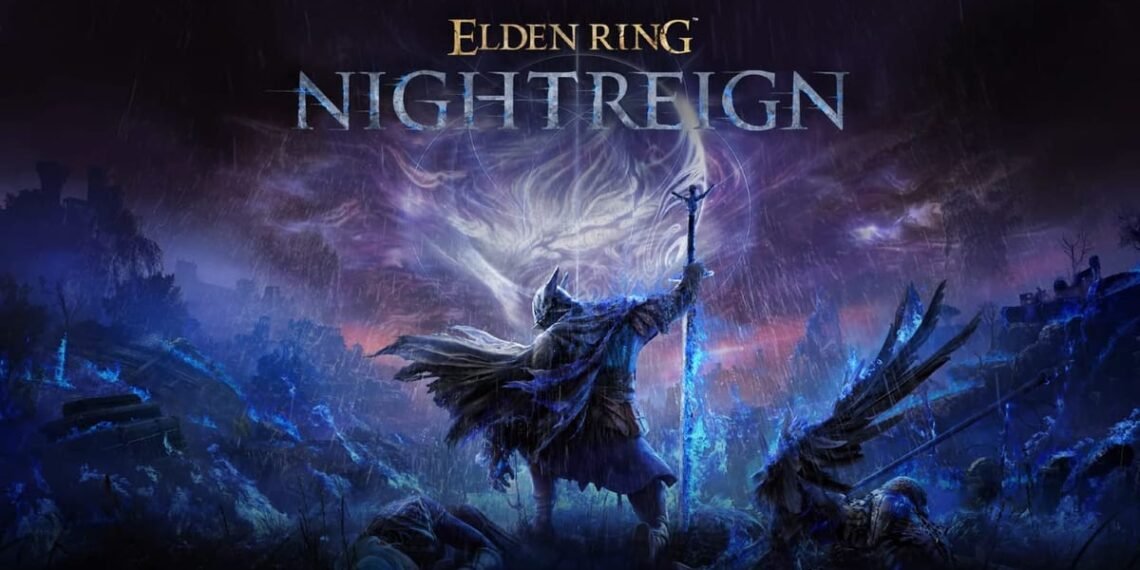Summary of Gameplay Features
Elden Ring: Nightreign, developed by FromSoftware and published by Bandai Namco, delivers a fresh multiplayer twist on the classic Soulslike formula. This addition to the popular Elden Ring universe blends the challenge of roguelike mechanics with cooperative multiplayer gameplay, offering a blend of familiarity and innovation for both new and veteran players.
At its core, Nightreign emphasizes teamwork by requiring groups of three players to explore dynamically shifting maps, engage in intense battles, and overcome challenging bosses. Unlike previous titles where cooperation was optional, this experience prioritizes and relies on cohesive team strategies, rewarding synergy and communication among players. A single-player mode is available, but the game is primarily designed to be a shared adventure, with voice communication highly recommended to maximize success.
Nightfarers and Abilities

Players can select from eight unique characters, known as Nightfarers, each inspired by traditional classes in Elden Ring. Some of the playable classes include:
- Wylder (Knight): A balanced class equipped with versatile abilities. This character utilizes a clawshot to dominate combat and can unleash a powerful ultimate attack to stagger bosses.
- Recluse (Mage): A black magic specialist, offering complex gameplay for experienced players.
- Guardian (Defender): A bird-like protector skilled in defensive tactics.
- Ironeye (Archer): A ranged specialist ideal for players who prefer distance-based combat.
Each Nightfarer brings distinct skills that can be customized and leveled up throughout a run. The game also encourages experimenting with different characters to discover new techniques and develop collaborative strategies. Some abilities even synchronize between players, such as one character’s potential to rewind damage during critical moments, amplifying teamwork.
Boss Battles and Exploration
Boss encounters are a central focus in Nightreign, with eight Nightlords acting as the ultimate obstacle during each cycle. One notable example is the Tricephalos Nightlord, a three-headed cerberus armed with a chain whip that splits into three separate foes. These battles require precise coordination, as each boss features massive Area of Effect (AoE) attacks and unique mechanics designed for group combat.
Exploration is equally rewarding and frantic. Players enter the map to gather buffs, items, and resources over two in-game days, all while avoiding a menacing blue storm that forces teams toward a central point. This storm serves to heighten tension, akin to mechanics seen in battle royale games.
Randomized environmental changes, such as erupting volcanoes and unexpected storms, keep runs fresh. Although the map itself is static, locations and item placements vary, creating diversity in subsequent playthroughs. Parkour mechanics, sprinting, and the absence of fall damage allow for dynamic traversal and emergency escapes across the richly detailed landscape.
Multiplayer Focus and Matchmaking

Cooperative gameplay shines as players engage in strategy discussions, plan routes, and adapt to evolving challenges in real-time. With the lack of a two-player mode, full teams of three are essential for many encounters, ensuring that moves are tightly aligned to take down bosses. However, matchmaking can sometimes be unreliable, with connection issues or lag disrupting the flow of a session. Additionally, Nightreign does not support crossplay, limiting the ability to team up with friends on other platforms.
For those who thrive on social aspects, group gameplay fosters a sense of camaraderie. Players trade strategies, celebrate victories, and share humorous or unexpected in-game moments, making the overall experience feel communal and memorable.
Challenges and Progression Systems
The roguelike elements of Nightreign add layers of difficulty and unpredictability. Failure results in the team starting the cycle over, creating a high-stakes environment where every decision can impact the outcome. Despite this, progression persists through the acquisition of Relics—passive buffs that can be equipped to enhance future runs. Relics unlock through in-game currency, which is also used to purchase cosmetic upgrades for Nightfarers.
Additional progression comes in the form of Remembrances, special character-specific missions connected to each class. These tasks often require defeating specific enemies or acquiring items, leading to unique rewards and building on the lore of the game.
Despite the steep learning curve at the beginning, particularly for players new to the Soulslike genre, those who take the time to master the mechanics and understand map intricacies will find the experience deeply rewarding. However, the lack of diversity in map design may lead to repetitive strategies in later runs, as players inevitably optimize their approach.
Combat and Strategy
Combat maintains the challenging and precise feel that FromSoftware is known for, with Nightreign distilling the Elden Ring combat system into fast-paced segments. Key aspects include timing, resource management, and exploiting weaknesses in both mobs and bosses. The addition of class-specific ultimate abilities introduces more creative ways to approach fights, especially when abilities are chained together for maximum effect.
Strategies aren’t limited to offense. Defensive plays, like reviving teammates in the heat of battle and using ultimates to shield allies, are just as important. Random invasions and environmental hazards add extra layers, requiring teams to stay adaptable.
Technical Aspects and Visuals

Technically, Nightreign carries over the high-quality visuals that fans have come to expect from FromSoftware, with vibrant landscapes, grotesque enemy designs, and atmospheric lighting. The environments are hauntingly beautiful, continually evoking a feeling of discovery. However, performance issues such as stuttering during some multiplayer sessions detract from the otherwise polished presentation. These technical hiccups do not heavily impact gameplay but are noticeable during critical moments.
Replayability
Nightreign balances difficulty and replayability well through its engaging gameplay loop. Runs are short but packed with thrilling encounters, encouraging players to keep returning to refine their strategies and overcome past failures. The balance of skill-based challenges and progression-based rewards ensures that long-term engagement remains satisfying.
While the repetitive map may lead to eventual fatigue for some, the randomized elements like boss order, item placement, and environmental effects inject enough variety to keep the majority of playthroughs fresh. The addition of unlockable content and class experimentation further enhances the appeal.
Final Thoughts on Gameplay Experience
Elden Ring: Nightreign offers a unique example of how cooperative gaming can elevate the core fundamentals of a Soulslike experience. Whereas many FromSoftware titles celebrate the solitary journey through perilous landscapes, Nightreign shifts the focus to shared experiences, blending intensity with moments of humor and triumph. While some technical issues and design limitations exist, Nightreign succeeds in introducing fans to a new way of exploring the Elden Ring universe. It brings fresh excitement to the genre without losing the challenging essence that has defined FromSoftware’s games for years.
Common Questions About Elden Ring: Nightreign

How is Nightreign different from the original Elden Ring?
Nightreign introduces a roguelike structure that sets it apart from the base game. While the core combat mechanics remain familiar, the emphasis on procedurally generated challenges and randomized encounters adds variety. Traditional exploration is pared down in favor of replayable scenarios, offering a fresh take on the game’s established systems.
How does Nightreign stack up to other RPGs released this year?
Compared to other RPGs from 2025, Nightreign stands out for its focus on unpredictable gameplay. Its roguelike features contrast with the more narrative-driven approach seen in many modern RPGs. The design encourages experimentation and adaptability in ways that feel unique for fans of this genre.
What updates have been made with this new expansion?
Players may notice adjustments to weapon balancing, expanded spell systems, and fine-tuned boss mechanics in Nightreign. These improvements enhance both combat depth and the variety of viable playstyles. Feedback-driven tweaks also appear, addressing community suggestions from the base game.

How does Nightreign impact the broader story of Elden Ring?
The expansion adds subtle layers to the lore, exploring darker themes and introducing new factions that expand on the game’s mythology. However, the narrative changes are designed to complement, rather than overshadow, the original story. Fans of Elden Ring’s narrative depth will find additional details to uncover.
What do players generally think about Nightreign?
Many players describe Nightreign as both challenging and rewarding. Positive reviews often highlight its innovative gameplay updates and exciting boss battles. Some critics, however, feel its roguelike design lacks the emotional depth and continuity of the main game. Opinions vary based on individual preferences.
What does Nightreign offer for solo adventurers?
Solo players can access tailored challenges designed to match their playstyles. Enhanced AI behaviors for NPC summons and new solo-specific objectives ensure that single-player progression remains engaging. Nightreign maintains the sense of achievement players expect from exploring Elden Ring on their own terms.





































